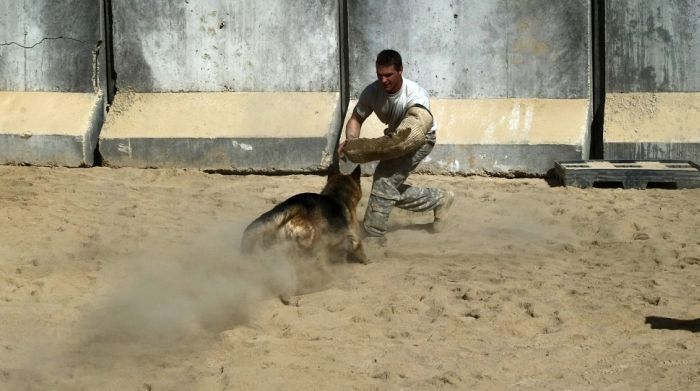|
|
War Dog
|
The Cold War sparked a heated debate over the ethics of animal experimentation in the U.S., particularly aimed at how canines were treated in World War II. In 1966, major reforms came to this field with the adoption of the Laboratory Animal Welfare Act.
• Detection & tracking
Many dogs were used to locate mines. They did not prove to be very effective under combat conditions. Marine mine detecting dogs were trained using bare electric wires beneath the ground surface. The wires shocked the dogs, teaching them that danger lurked under the dirt. Once the dog's focus was properly directed, dummy mines were planted and the dogs were trained to signal their presence. While the dogs effectively found the mines, the task proved so stressful for the dogs they were only able to work between 20 and 30 minutes at a time. The mine detecting war dogs anticipated random shocks from the heretofore friendly earth, making them extremely nervous. The useful service life of the dogs was not long. Experiments with lab rats show that this trend can be very extreme, in some tests rats even huddled in the corner to the point of starvation to avoid electric shock.
This is the result of variable schedule operant conditioning. Rather than shocking the entire ground surface, the electric shock components should be placed directly over the mine detonation area. This would teach the dogs and mice that only sections of ground over mines are dangerous, not all of the ground.
|
|









